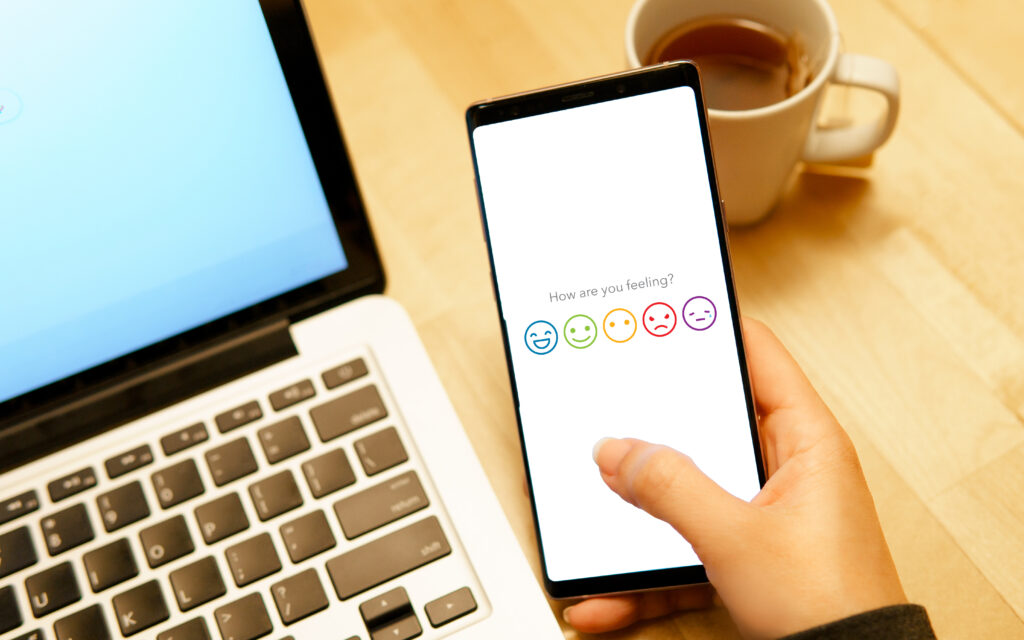Digital health products: unique challenges and exciting opportunities
28 April 2023
Share this page
Digital health products are transforming the healthcare landscape and providing patients with new ways to manage and treat conditions. However, they come with several important considerations for medical communicators, especially when compared with traditional pharmaceuticals, explains Principal Medical Writer Caroline Leitschuh.
A pill that pings your phone after you swallow it. Apps that treat mental health conditions from the comfort and privacy of your own home. Shirts that perform electrocardiography and send results to your doctor while you go about your day.
Digital health products like these have the potential to increase access to treatment and address healthcare inequities. However, as more digital health products are developed, it’s increasingly important for medical communicators to understand how these products fit into the healthcare landscape.
What are digital health products?
The term ‘digital health’ covers products with a digital component that are used by hospitals, healthcare providers and patients to facilitate healthcare. Digital health products fall into three broad categories.
- Digital health: any digital product used for healthcare information storage or transmission, clinical operation, or lifestyle/wellness reasons.
- Digital medicine: evidence-based products used to take health measurements or provide interventions (not treatment).
- Digital therapeutics (DTx): evidence-based products that help to prevent, manage or treat a medical condition. This category includes prescription DTx.
Navigating digital health product regulation
Regulations for digital health products vary by country, and many products are not subject to any regulatory oversight.1 This can make it difficult for the public to distinguish between evidence-based apps and those that make unsubstantiated claims about health benefits.
Although some apps can be helpful, others contain information that is not supported by research or is incorrect. For example, in a review of more than 1000 apps for psychosocial wellness and stress, it was found that just 2% of the apps were supported by published research.2 In a review of 98 self-guided cognitive behavioural therapy apps for depression, only 17% of the apps were supported by published research.3
Unfortunately, if an app claims to be for ‘wellness’ and not specific diagnostics or treatment, there is little to no content oversight.
Digital medicines are usually subject to some type of oversight, but not necessarily at the level of the central government.1 DTx are subject to more rigorous oversight; they may be assessed by the US Food and Drug Administration or by a regulatory body in the EU that has the authority to award Conformité Européenne (CE) certification.1,4,5
Working on digital health products versus traditional pharmaceuticals
At Oxford PharmaGenesis, we support many clients with digital health products. Although there are similarities when working with digital health products compared with traditional pharmaceuticals, we’ve also encountered key differences.
- Terminology is not standardized. Digital health products – especially DTx – are still relatively novel, and for most treatment areas there are few options. Also, the technology used to support many of these products is rapidly changing, and so the terminology used for aspects of digital health can vary among stakeholders, products and treatment areas.
- Clinical endpoints and assessments are not well established. Efficacy, safety and adherence are measured in different ways for digital health products than for traditional pharmaceuticals, and there isn’t yet a consensus as to how best to evaluate these endpoints. Some digital health products might also have an engagement metric. Measuring user engagement can be difficult, and there is no consensus on what constitutes meaningful engagement with digital products.
- Regulatory requirements need to evolve to keep up with technology. Staying on top of the continually evolving regulatory considerations for digital health products is challenging, especially because regulations vary among different countries.

1. Digital Therapeutics Alliance. Digital health industry categorization. Available from: https://dtxalliance.org/wp-content/uploads/2019/11/DTA_Digital-Industry-Categorization_Nov19.pdf (Accessed 9 December 2022).
2. Lau N, O’Daffer A, Colt S et al. Android and iPhone mobile apps for psychosocial wellness and stress management: systematic search in app stores and literature review. JMIR Mhealth Uhealth 2020;8:e17798.
3. Martinengo L, Stona AC, Griva K et al. Self-guided cognitive behavioral therapy apps for depression: systematic assessment of features, functionality, and congruence with evidence. J Med Internet Res 2021;23:e27619.
4. Vaidya A. What are digital therapeutics and their use cases? Available from: https://mhealthintelligence.com/features/what-are-digital-therapeutics-and-their-use-cases (Accessed 9 December 2022).
5. Buttron S. CE marking of digital health technologies: stricter rules for medical device software under the EU MDR. Available from: https://namsa.com/mdr-stricter-rules-medical-device-software/ (Accessed 9 December 2022).
